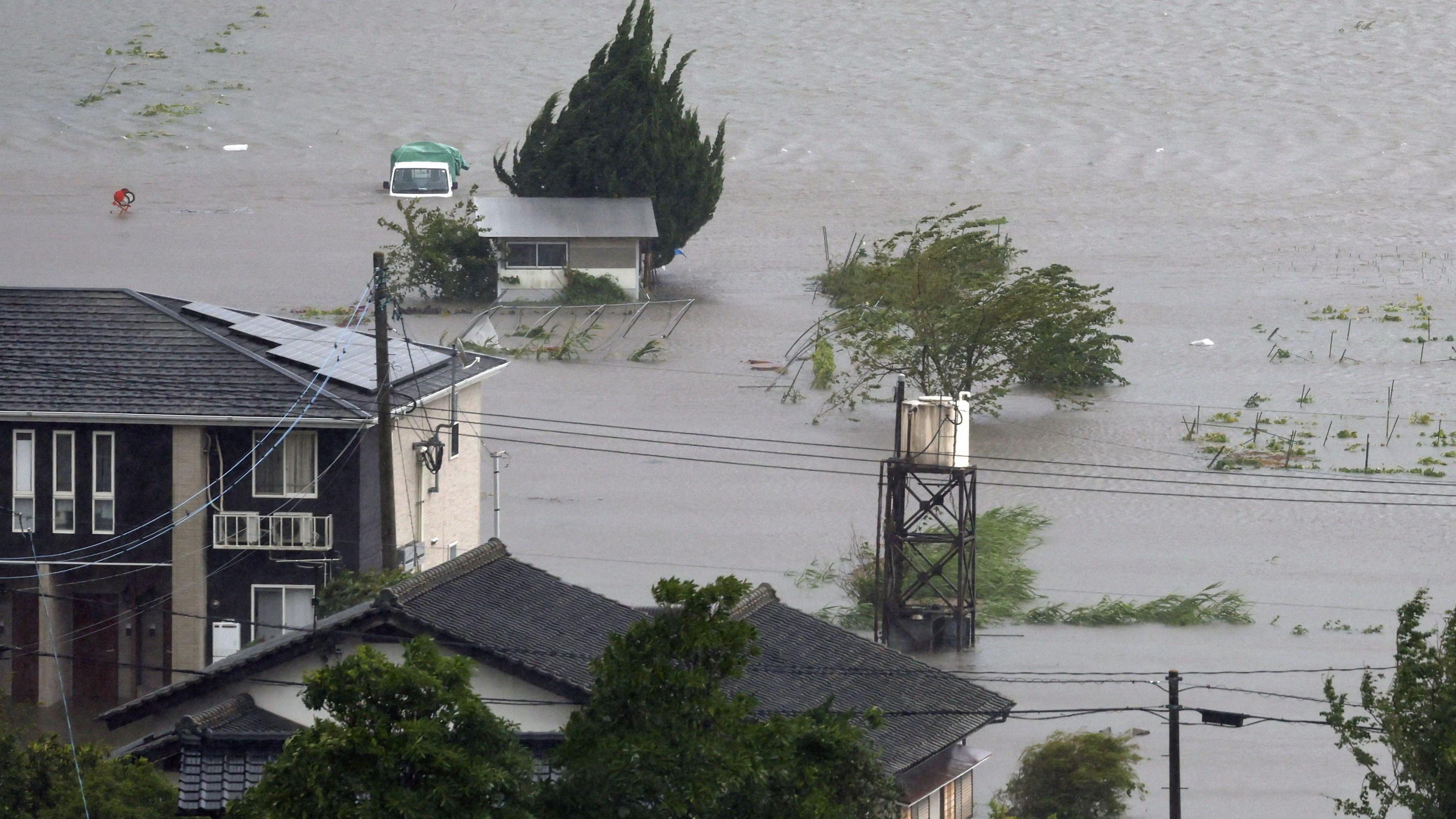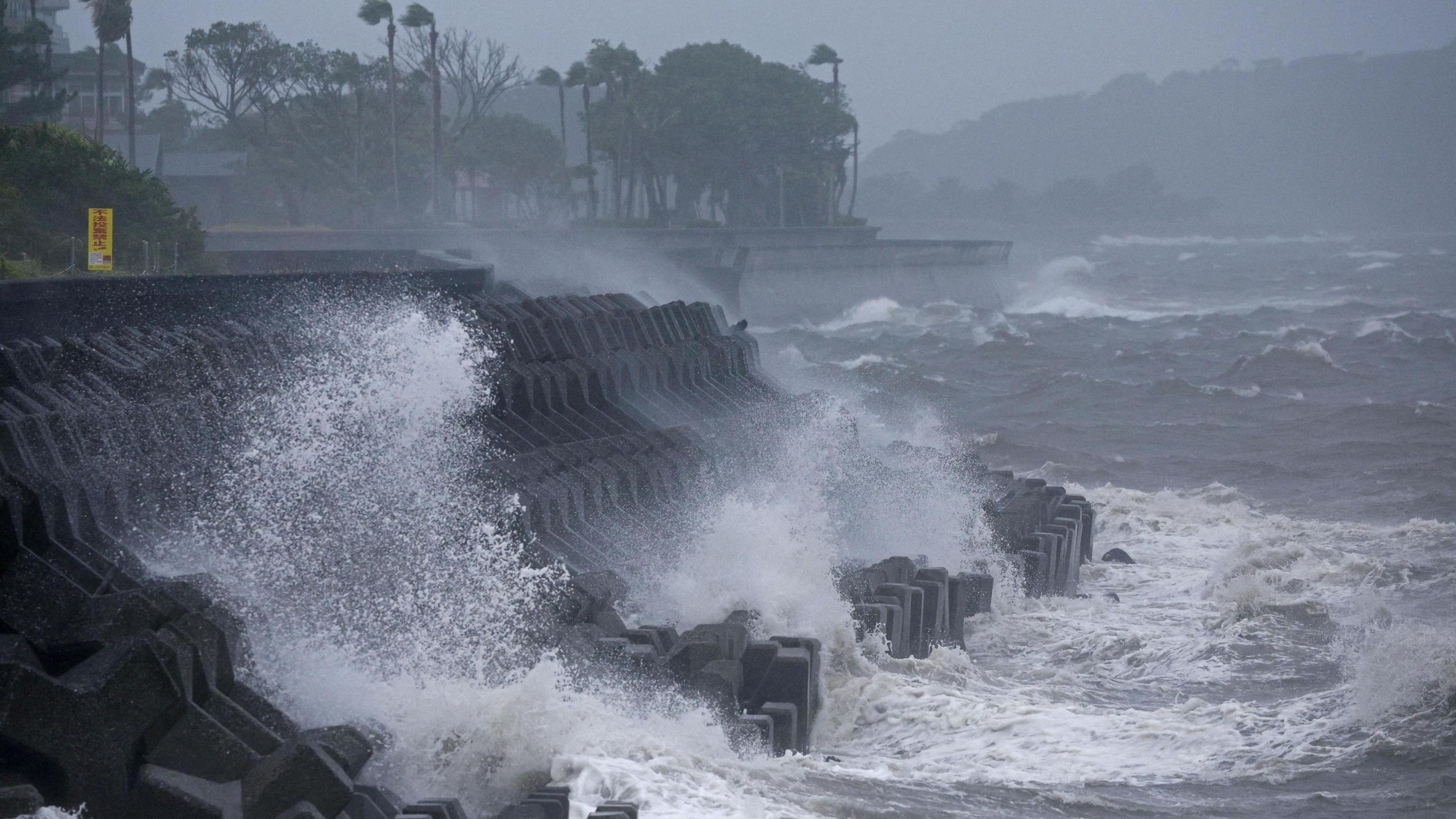Millions of people in Japan told to leave home because of typhoon

Many homes have been affected by the heavy rain
- Published
Millions of people have been told to leave their homes because of a typhoon in south west Japan.
More than 5 million people have been told to evacuate, according to Japanese authorities.
Japan's office for weather - the Meteorological Agency - issued a rare "special warning" for Typhoon Shanshan.
The Japan Meteorological Agency only gives these out for these for the most powerful of storms.
More weather stories
Hurricane Beryl: Power cuts and flooding reported in Jamaica
- Published4 July 2024
The Big Question: How do we predict the weather? Video, 00:01:50
- Published14 December 2017
The typhoon has reached gusts of up to 252 kilometres (157 miles) per hour making its way into Japan's main southern island of Kyushu early Thursday.
This makes it one of the strongest storms to reach land in decades.
The typhoon has seen torrential rain across southern regions, with authorities warning of flooding and landslides.
What is a typhoon?
Simon King explains what hurricanes, cyclones and typhoons are
Typhoons are a type of tropical storm, and they are typically formed in the north west Pacific ocean.
Tropical storms happen when air that has been warmed by sea water rises quickly.
As the air rises it cools down again, but it is pushed aside by more warm air rising from below creating a fast cycle of strong air.
A tropical storm in the Pacific can be called a typhoon when it has winds faster than 74 miles an hour.
How has Typhoon Shanshan affected people?

The weather has affected power supplies, air traffic and forced major factories to close.
Flights have been cancelled and train services have been suspended in many areas of Kyushu.
The transport ministry says bus and ferry services have also been halted.
More than 230,000 households were without power on Thursday morning, according to Yoshimasa Hayashi, the chief cabinet secretary.

The typhoon has caused high waves on the shore
Typhoon Shanshan is the latest fierce weather system to hit Japan, following Typhoon Ampil, which also led to blackouts and evacuations, earlier this month.
After hovering over Kyushu for the next few days, the storm is expected to approach the central and eastern regions, including the capital Tokyo, around the weekend, the weather agency said.
The chief cabinet secretary for Japan warned that the typhoon was moving slowly, and could bring lots more rain.
There are concerns this could lead to flooding.
Emergency services are working hard to evacuate people in affected regions of the country.
More stories about Japan
- Published4 January 2023

- Published2 March 2021

- Published23 May 2022

